Anzac Day AFL: Hawthorn coach Alastair Clarkson on how Kokoda Track shaped the club
Alastair Clarkson’s first trip to Kokoda was with a fractured football club. But the lessons of sacrifice and mateship created a dynasty.
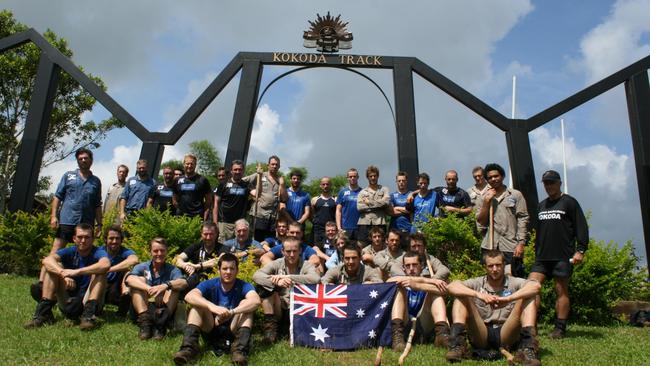
AFL
Don't miss out on the headlines from AFL. Followed categories will be added to My News.
Alastair Clarkson isn’t easily given to emotion.
In many ways that can be the product of being such a high achiever in professional sport over a long period of time.
As a player, and across the last 17 seasons as an AFL coach, Clarkson has often been characterised as hard and uncompromising, always looking forward to the next challenge.
But when he talks about Australia’s extraordinary campaign against the Japanese at Kokoda during World War II – one he maintains has always been cruelly under appreciated and under acknowledged on a global stage – the emotion is unmistakable in his voice.
Watch the 2021 Toyota AFL Premiership Season. Every match of every round Live on Kayo. New to Kayo? Try 14-Days Free Now >
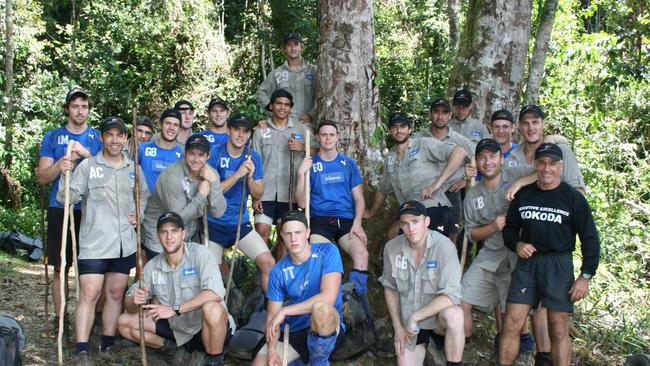
“It’s something that is pretty close to my heart,” Clarkson told the Sunday Herald Sun, explaining the admiration he and the Hawthorn Football Club have for the long-gone diggers who trekked through the Owen Stanley Range in New Guinea.
Those diggers repelled the Japanese against insurmountable odds as almost the last bastion to Australia in 1942.
Clarkson has been to Kokoda on six occasions.
He first took the Hawthorn playing group there in late 2004 to use the sacrifice made by those young Anzacs to provide a sense of perspective to what was then a fractured Hawthorn Football Club.
SCROLL DOWN FOR MORE PICTURES OF HAWTHORN ON THE KOKODA TRACK
The most recent trip for a group of players and staff came in late 2018, but Clarkson is keen to somehow find a way to keep that tradition alive following the COVID pandemic.
“It (Kokoda) continues to get to me today,” Clarkson said. “It gives you a real grounding of your core values, of who you are, and what others before you have gone through.”
“The AFL bubble, particularly in this current professionalism, is a pretty precious bubble, to be fair. Sometimes it is hard for players to actually be grounded in the reality of what their life could have been like if they had lived in another era.
“When you are walking the very footsteps those men walked in, (the guides) talk to you about the canopy and the heat and the rain and the mud … you need to be there to feel it and embrace it.”
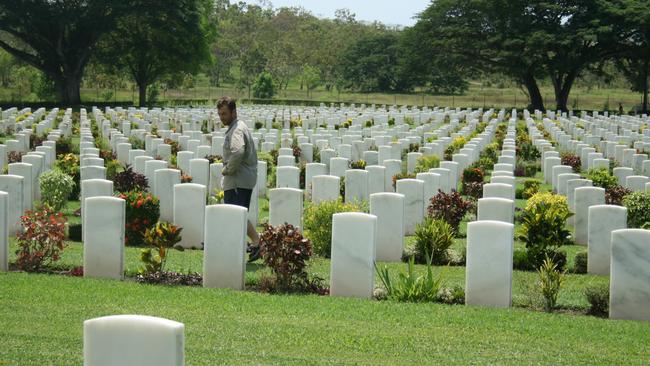
DISCOVERING KOKODA
As a kid growing up in Kaniva, in Victoria’s Wimmera, Clarkson had always been interested in Anzac Day.
But so much of what he was taught in school centred on Australia’s contribution to the war in Europe – not the one on our own doorstep.
“When I grew up, Anzac Day was pushed through the schools, but mainly as a celebration of the soldiers who fought in Europe,” he said.
Clarkson blames US General Douglas MacArthur, a divisive figure who tried to downplay the Anzacs’ contribution at Kokoda, even accusing them of cowardice for ‘retreating’ from the Japanese.
“Somehow the whole PR campaign around Kokoda got lost because of a bloke by the name of General MacArthur,” he said.
“He was the one who poisoned the mindset of the world in saying that our Australian soldiers were cowards because they were withdrawing across the campaign when in actual fact (Australian) Colonel Ralph Honner, one of the great military strategists, was staging a fighting withdrawal, which means they fought and withdrew at the same time.
“For us not to be educated about that when we were going through school was a crying shame.”
It took Clarkson’s wife Caryn to open his eyes to what really happened at Kokoda after she took a school group there in the mid-1990s.
“My wife had trekked Kokoda before I even knew what Kokoda was,” he said.
“I was actually embarrassed being a dinky di Aussie and I knew very little about a battle that was so significant to our country and so close to our shores.
“I developed an interest in it and thought it was a fascinating story.”
So when he took over as coach of Hawthorn in late 2004, he sensed an opportunity to learn more and to educate others.
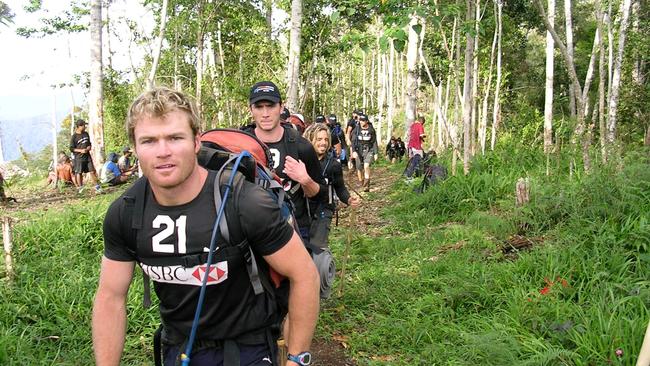
HOW THE 2004 TRIP HELPED SAVE THE HAWKS
The Hawks adopted the four pillars of Kokoda – Courage, Endurance, Mateship and Sacrifice – which adorn the Isurava Memorial in Papua New Guinea – after their first trip in 2004.
Those pillars still form part of the club’s gym at Waverley, as a daily reminder to the players.
“(Kokoda) helped us enormously,” Clarkson said. “It helped us get back to being a grounded club again. Whether it was by luck or sheer coincidence, we did get ourselves back into a position where we could compete for silverware again.
“But irrespective of whether there was going to be silverware or not, I know that we became a better football club for having an association of our players and staff going to Kokoda.”
Hawthorn insiders maintain the club’s link to the Kokoda values helped to secure the silverware on show at the club’s home base.
The club has won four flags since their first trip to Kokoda – with Grand Final success in 2008, 2013, 2014 and 2015.
Clarkson believed the greed associated with the game’s move to professionalism had impacted on Hawthorn in 2004.
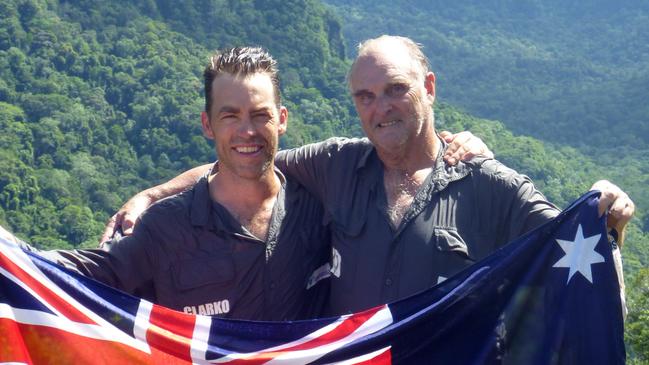
“We had been a club that had had great success in the amateur era, but that success was really driven by the values of John Kennedy Sr.,” he said.
“Those grounded family values wouldn’t have mattered whether you were in a footy club, a business, a church, politics or whatever walk of life. It just so happened that ‘Kanga’ loved footy and that’s where he had his biggest influence on a generation of footballers.
“When it came to the professional era, unfortunately some of Kanga’s indoctrinated messages got lost amongst the greed. The game grew, broadcast and advertising money came in and with that came increased player contracts, increased opportunities and increased media focus.
“That increased greed … and with greed comes s--- values and s--- behaviours. That not only happened to our club, but to many clubs, particularly the Melbourne-based ones.
“At the end of 2004 we embarked on this mission to arrest that very issue to do with greed.”
It worked spectacularly.
The Hawks took their entire playing list to Kokoda in late 2004, following on from the Sydney Swans who had been there earlier.
New draftees Lance Franklin, Jarryd Roughead and Jordan Lewis had their first trip away with the group in 2004, a relatively young Sam Mitchell thrived and veteran Shane Crawford was also re-energised.
Other groups followed in later years and Kokoda became ingrained in the Hawthorn culture as well as a key element of the induction of new players and staff.
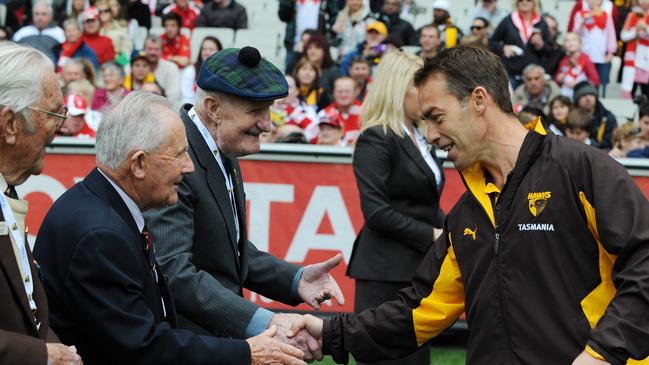
HEROES OF KOKODA
Clarkson’s admiration for the Diggers who fought in the Kokoda campaign – which ran from July to November 1942 – has grown through the years as he has learnt more about the soldiers.
“The Japanese … pushed their way through the Pacific … they had been unbeaten before they got to Kokoda and confronted the Australians,” he said.
“Without disrespecting the diggers at Kokoda, they weren’t the ‘A grade’ diggers … (most) of our ‘A grade’ soldiers were over in Europe helping the British (or back in Australia).
“Some of the guys there were ones who had been rejected in the first intake of soldiers … but when the desperation came that we had to send someone to confront the Japanese, these men – sometimes outnumbered 10 to one – fought this unbelievable campaign.”
Ralph Honner looms large in Clarkson’s thoughts, as the man who “was at the forefront of the (Kokoda) strategy.”
“If we had just confronted these guys face-to-face it would have been something like 10,000 to 1,000 … the Japanese were prepared to sacrifice lives (for the Emperor),” Clarkson said.
“Ralph Honner said ‘I don’t understand that’ … if we go and sacrifice those Australian lives, there would be 1000 of our lives lost and 1000 of their lives lost, and the rest of them could have just walked straight onto the mainland of Australia and invaded us.
“Who knows what Australia might look like now if that had taken place.”
Some of the inexperienced diggers were dubbed ‘chocolate soldiers’, because it was thought they were so inexperienced they might melt in the heat of battle. They didn’t.

“We have so much to be grateful for, particularly for those from the 39th Battalion who bore the brunt of the initial attack, and another group from the 2/14th, and there were others too,” Clarkson said.
“There were these guys known as the Bisset brothers who were right at the forefront of the battle. There was Sam Templeton, Bruce Kingsbury, Charlie McCallum, John Metson and so many others.
“You need to be there to feel it and embrace it, and to be in the spots where it all happened.
“There’s the (Bruce) Kingsbury rock at the Battle of Isurava, there’s the Battle of Brigade Hill.
“There are different spots on the Track, where the Japanese mounted an enormous assault, and there is a spot where Stan Bisset nursed his brother ‘Butch’ to his death.
“You can’t help but be confronted by that.
“You find links to your own mates and your own family and your own group of friends or teammates or colleagues.”
Kingsbury was posthumously awarded a Victoria Cross for rushing forward and firing his Bren gun from his hip at the Battle of Isurava in August 1942.
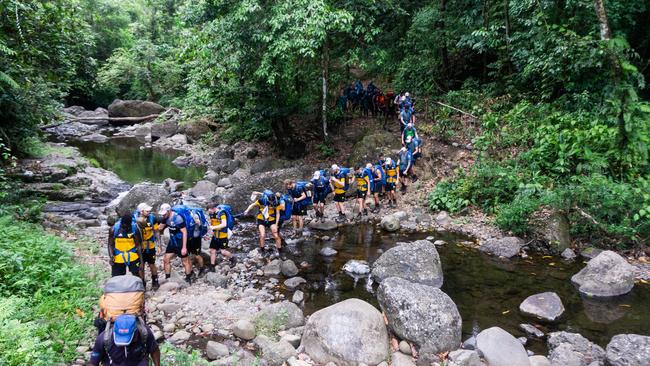
He inflicted numerous casualties on the Japanese before being killed by a sniper, but his counterattack helped turn the tide of the campaign.
The Bisset brothers – Stan and ‘Butch’ (Hal) – showed exceptional bravery, with Butch dying in his sibling’s arms.
Metson was shot in the ankle during the battle but refused to accept help from stretcher bearers.
Instead, he wrapped blankets around his hands and knees, and started crawling in the direction of Port Moresby, which was “80 miles away”. Sadly, he never made it.
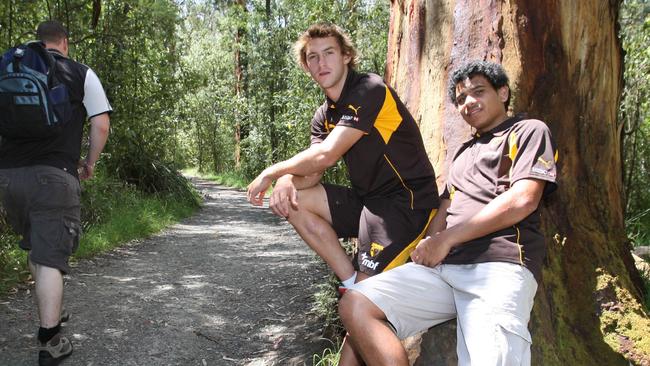
FUTURE LESSONS
Next year will mark the 80th anniversary of the Kokoda campaign, and Clarkson wants more Australians to explore the story.
“They didn’t get the plaudits they deserved,” he said.
“When we started doing Kokoda 17 years ago, we had these veterans from the 39th Battalion and the 2/14th come out and talk to us. They were just loving the fact that finally some attention was being given to their deeds and feats. But even then it was 63 years too late.”
The Kokoda lessons, he says, are as profound now as they were eight decades ago.
“We could and should be doing more for one another,” he said. “We have become so internalised and self-centred. Kokoda is just the means to try and defy that.
“We need to work out ways to keep these stories as a significant part of Australian culture and folklore. I think AFL footy can be a part of that, too.”

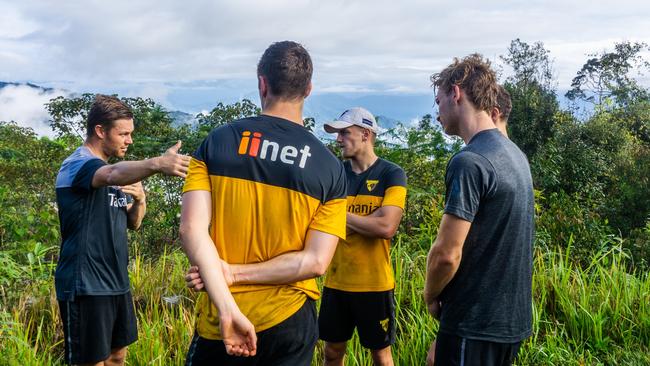

He would love to see the AFL revive the Kokoda match the Hawks used to play with Sydney, and make it a centrepiece of the Anzac round, without intruding on the other blockbuster games of the round.
He would love to start planning another Hawks’ trip to Kokoda for the post-pandemic age, but also is mindful how difficult that is now given the AFL includes all training camps in the football department soft cap.
He is also keen for Australians to continue to support the locals in Papua New Guinea.
“These native PNG people were so instrumental in helping Australians to be able to fight the Japanese in 1942,” he said.
“We can never forget what they did.”




